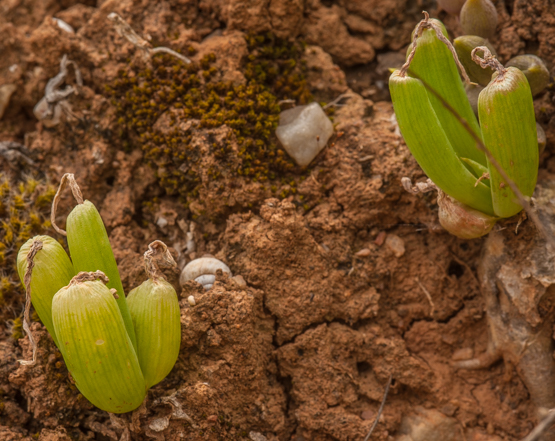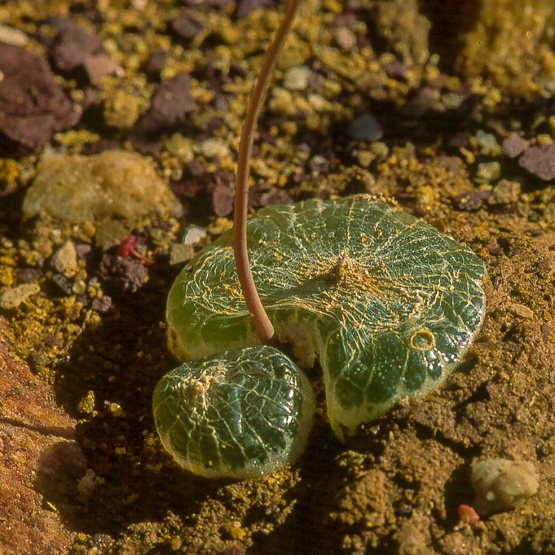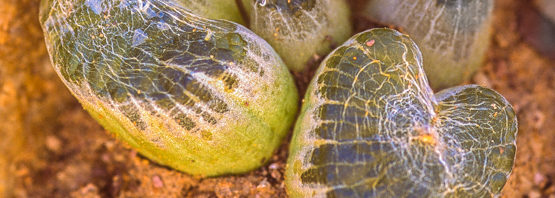If there were a list of favourite types of succulents, I’m sure the so-called window plants would rank very high. Most of these plants belong to the Aizoaceae (Mesembs), but they are also found in Bulbine and Haworthia.
When one looks up information on window leaves, one gets the impression they are all built on the same principle: the surface of the leaf tip lacks chlorophyll, the central parenchyma* reaches up to the epidermis and as a result of this combination, the leaf tip looks and acts like a window.
In a few cases however, the windows are formed differently.
It has taken me quite a while to find a place where this is described in a comprehensive as well as comprehensible way.
In Cactus & Succulent Journal (US) vol. 16, 1974, Werner Rauh published an article called Window-leaved succulents. He starts his explanation with a description of Haworthia obtusa (=cooperi) var. pilifera and uses more or less the following wording:
“The numerous fleshy leaves are nearly hidden in the substratum and we can only see the transparent, glass-like leaf tips, ending in a long hair. The transparence of the leaf tips is caused by a lack of chloroplasts**. We find the assimilation parenchyma only in the lower two thirds of the blades, but these leaf parts are not accessible to the light. The consequence of this anatomical structure is that light, necessary for assimilation, can reach the assimilation parenchyma only by passing the transparent windows. But the leaves of H. pilifera are not in the morphological sense true window leaves.”
He then moves on to Haworthia obtusa (=cooperi) var. dielsiana, saying:
” … the most remarkable feature is the behaviour of the leaves in the course of their development: young leaves are of the same shape as those of H. pilifera, but becoming older, the upper third of the lamina, which exceeds the soil surface, dies off, so that only the water parenchyma, covered by the shrunken epidermis is to be seen. The lower parts of the leaves with the assimilation parenchyma are hidden in the ground; sunlight can reach it only by passing through the water parenchyma.”
This is the same type of window formation we find in Bulbine mesembryanthoides. In Rauh’s words:
“Becoming older, the upper parts of the leaves die off, as in Haw. obtusa var. dielsiana and the result is the formation of a big window with a plane surface. The assimilating parenchyma is completely hidden in the substratum.”
We know that strong sunlight destroys the chlorophyll, which is essential for the plant’s metabolism.
Window-leaved plants are hidden in the ground (at least in the hot and dry season) and sunlight can reach the assimilation tissue only through the windows, passing through the water parenchyma. This filtering process protects the plants against very strong light.
In experiments carried out with Fenestraria, it was found that the light is reduced so much that the chloroplasts will not be damaged, but stays strong enough to allow sufficient assimilation and production of organic substance.
* parenchyma is the relatively undifferentiated tissue that makes up the bulk of many plant organs and is often used for storing of water or food.
** chloroplasts are the tiny parts within plant cells that contains chlorophyll.



Such interesting plant, the body looks like mesembs, but the flowers are of Haworthia!
Quite right: the name of the species refers to its resemblance to mesembs, but the flowers tell you that it is part of the same family as Haworthia.